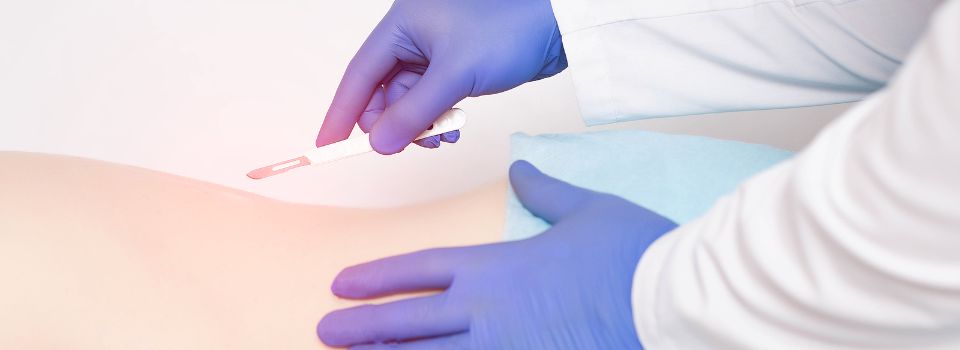When other pain management methods fail, spinal cord stimulation (SCS) offers a non-surgical, drug-free solution for chronic back pain. Advanced Pain Medical Group’s pain clinics in the Los Angeles, CA metro area offer this specialized treatment. SCS prevents the brain from processing pain signals, and you can even have the device implanted for fast, convenient relief you control remotely.
What Is Spinal Cord Stimulation?
Spinal cord stimulation involves using thin wires called electrodes and a battery pack to treat chronic pain. Qualified physicians apply electrodes between the vertebrae and spinal cord under the skin. Typically, that means positioning them near your abdomen or buttocks. Your implant will have two parts – a battery pack and the electrodes used to deliver these electrical signals. You’ll use a remote control to program the type and strength of pain relief you need.
How Does It Work?
Doctors still don’t fully understand why spinal cord simulation works. However, the process may alter the way your brain detects pain signals. Additionally, it can directly impact multiple muscle groups for extensive relief. The physicians who install these devices are well-established and trained in interventional pain management.
Who Does Spinal Cord Stimulation Benefit?
Our staff carefully evaluates each candidate to ensure a good fit. Our specialists perform a full exam, including a psychological screening. The outcomes vary depending on several factors but particularly benefit the individuals who meet these criteria:
- Insufficient Pain Relief
- No Psychiatric Disorders
- A Condition That Benefits From SCS
Conditions That Respond Well to SCS
Pain comes from countless conditions, and everyone experiences it in unique ways. Our Los Angeles clinic uses ingenuity and comprehensive analysis to treat clients effectively via spinal cord stimulation. As a result, we have had great success treating clients with many medical conditions.
- Peripheral Vascular Disease
- Persistent Arm Pain
- Stump Pain
- Multiple Sclerosis (MS)
- Spinal Cord Injury
- Sciatica
- Complex Regional Pain Syndrome (CRPS)
- Arthritis
- Spinal Stenosis
- Nerve Damage
- Arachnoiditis
- Angina
- Diabetic Neuropathy
What Are The Benefits?
You’ve already learned that spinal cord stimulation can effectively reduce chronic pain. It can also improve your quality of life by giving you more energy and the confidence to resume routine activities.
- Decreased Medication Dependence
- Customized Treatment
- Temporary Or Permanent Treatment
Types Of Spinal Cord Stimulators
Your pain specialist will help you choose from available SCS device types. Your decision may depend on the power levels you need, the desired time between surgeries, and the availability of each type of stimulator.
- Implant Pulse Generator (IPG): These must be replaced every two to five years.
- Rechargeable Implant Pulse Generator: These must be replaced every eight to nine years.
- Radiofrequency Stimulator: These are placed outside the body.
Starting The Trial Period
Spinal cord stimulator implantation involves two main phases: the testing phase and permanent placement. The testing phase ensures you are a good candidate for this pain-blocking procedure.
- As you lay face down under sedation or local anesthesia, a small incision is made in your lower back.
- We use fluoroscopy to precisely guide the SCS electrodes through the spine’s epidural space.
- Your pain doctor may also use your live feedback to ensure you get a good placement.
At this stage, the battery pack (generator) is left outside, usually on a belt. - You will use the trial spinal cord stimulator for about a week to ensure you are experiencing at least a 50% reduction in pain.
What Happens After The Trial Period
If the testing phase is successful, you can schedule a date for your surgery, and we will permanently implant both the electrodes and the generator for you. If not, we will remove the electrodes and explore other pain treatment options. Your pain specialist will give you instructions for aftercare. If you have any questions, please consult with your specialist.
- Yes, you can swim with a permanently placed SCS device. You’ll want to skip the pool while still in the testing phase.
- Yes, you may set off airport security, but your doctor will give you a card that may allow you to bypass these scans. Otherwise, you can turn your device off before stepping through the scanner.
- Yes, as long as you power off your device, you can usually get X-rays and CT scans.
- No, MRIs are not usually safe for SCS implant patients. Your doctor will be able to determine compatibility with your specific device.
- No, driving or operating heavy machinery is not recommended with these devices.
Try Spinal Cord Stimulation In Los Angeles
You can explore a variety of relief options provided by Advanced Pain Medical Group, including spinal cord stimulation. We serve patients in the greater Los Angeles, CA metro area. Reach out to us for more information on the benefits of spinal cord stimulation and to determine if it’s the right choice for you.

